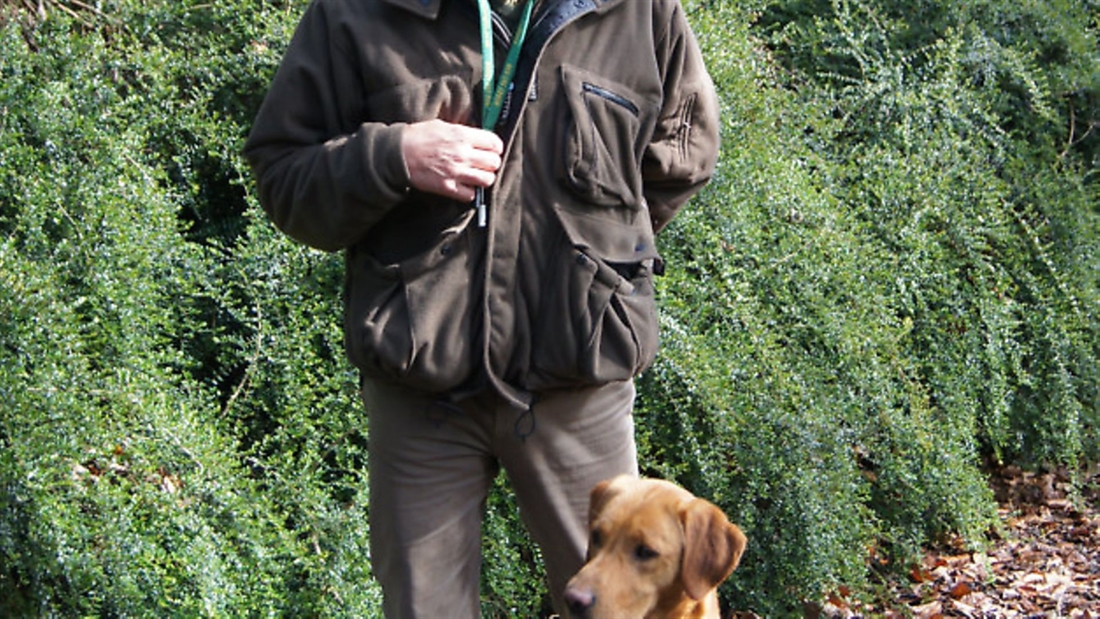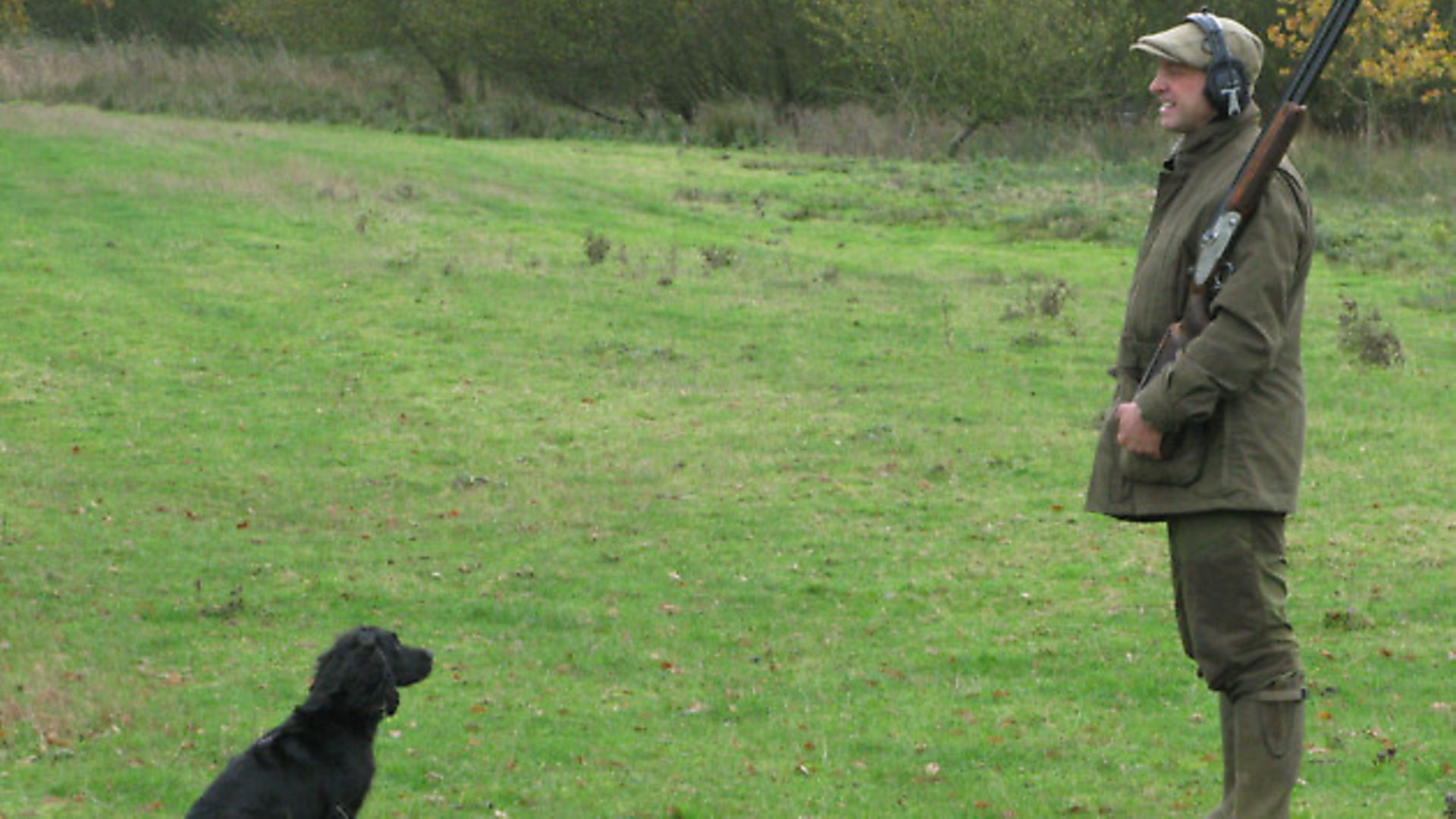Perfecting that peg dog

Last time we took a general overview of just what a peg dog is and what exactly is expected of it. This time we’ll discuss how to achieve it.
Last time we took a general overview of just what a peg dog is and what exactly is expected of it. This time we’ll discuss how to achieve it.
A well-trained peg dog needs to have reached a certain level of maturity and have the training and experience to cope with the demands of the job. Therefore the minimum age of a peg dog is around two years old. The dog will have been in training from eight weeks of age, and the early period from two to six months will have been spent ensuring your puppy is developing into a well-socialised, confident, attentive and keen retriever.
From approximately six months of age you can start to think about the more formal side of training. Steadiness in a peg dog is essential, so a training programme will be worked on over the next 12 to 18 months to ensure the dog is calm and quiet, with loads of self control, but also real enthusiasm for a retrieve. This will be combined with a gradual introduction to gunfire, fur, feather, cold and – finally – freshly shot game, followed by a gentle introduction to shoot day picking up. Over the months the perfect peg dog will slowly emerge from the training regime, and you are then ready to shoot over the dog on the peg.
Whenever possible, and in my opinion particularly the first time that a dog is to sit at the peg, you should make sure that you are not trying to shoot in addition to handling the dog. Instead, stand at the peg whilst someone else does the shooting. You need to supervise and oversee every one of the dog’s thoughts and moves; you have worked really hard to train the dog to this standard, so it would be really stupid to let things slip now. Birds that are shot and fall close to your dog will always test the dog’s steadiness, and if you are stood with the dog you can nip any building overexcitement in the bud. It’s essential now that you remember just exactly what the main qualities of a peg dog are: steadiness, steadiness and steadiness. So let’s get it right.
If training has been done thoroughly, the dog will sit still throughout the drive. Once the drive finishes, don’t rush; leave your dog in the sit and wait until the gun is unloaded and re-sleeved and spent cartridges picked up. By now some of the other dogs may be collecting birds – maybe even the ones around your peg, which is not good form – but don’t worry and instead treat it as more steadiness training and development. Allowing your dog to collect birds from around a peg that has a dog sat on it is just plain bad manners, by the way, and if you are a culprit I suggest you go straight to the ‘telling off’ section (see bottom of page).
Have a really good look around the peg and make some sensible decisions. If there are a number of shot birds around the peg, and particularly if there are some that are close together, leave the dog sat quietly and walk out and pick some up; remember this young dog is still learning his craft. One or two nice, straightforward, clean retrieves are all he needs. It’s really important we don’t send him out into too many birds, as some very nice dogs get spoilt if they are allowed to run around swapping birds. This very bad habit develops quickly and the worst cases become useless as retrievers because they prefer to just run around swapping rather than bringing anything back to the handler. I call these dogs ‘land sharks’, which is a bit harsh as they have only become monsters as a direct result of bad dog handling. If there is a land shark on your shoot keep your dog away from him, and if his owner has released him at the end of a drive, keep your dog sat at your peg. This top-end predator will cruise all the pegs, picking up, shaking and crunching and will often try to take birds from other dogs’ mouths. He is a force to be reckoned with and best avoided.
If your peg backs onto woodland or heavy cover, a good dog will really come into his own, as it’s likely that this is where the birds you shoot will fall. Again, have a really good look and think before casting your dog. Where are the picker-ups? They may already be on the case, as birds that fall into heavy cover may need to be picked fairly efficiently as they can often take some finding.
If the picker-ups are busy elsewhere then now is your big moment. Ensure you know where you have picked birds from and how many – you should know the answer to this one already, as you shot them so you should have marked them down!
If you are struggling to find that last bird, don’t hang around too long or you might find you are holding up the gun bus that’s waiting to transport the Guns to the next drive. Tell the picker-up exactly what you’ve got and what you think is still to be found. Finding a bird that has fallen into cover is what makes gundog handlers smile; a couple of good retrieves can make your day.
Handling a peg dog correctly takes experience and skill, so you can’t just assume you know how to do it. Like all elements of a day’s shooting, the people that do things well have worked hard and learnt their skill. Remember the five Ps: Prior Preparation Perfects Phido’s Performance. Yep – another gem of a rhyme from Howard!
Telling off
YOU! YES, YOU! Guns, pickers-up and beaters: please be nice to each other, be polite and be respectful. Every season, the letters page of shooting magazines get full up with Guns and pickers up arguing over whose dogs should do what – argh! Stop it and grow up; there’s more than enough birds for everyone, so long as you talk nicely to each other and communicate. Shoot captains, tell your Guns to talk to the pickers up, and head picker ups, just talk to your team: “Leave the pegs with dogs on alone. Sweep up around the pegs discreetly after you’ve cleared up, and do it on your way back to the game cart.” If a Gun insists on helping out, then politely ask what they’ve picked up, work together and then everyone can go home having had a nice time.






